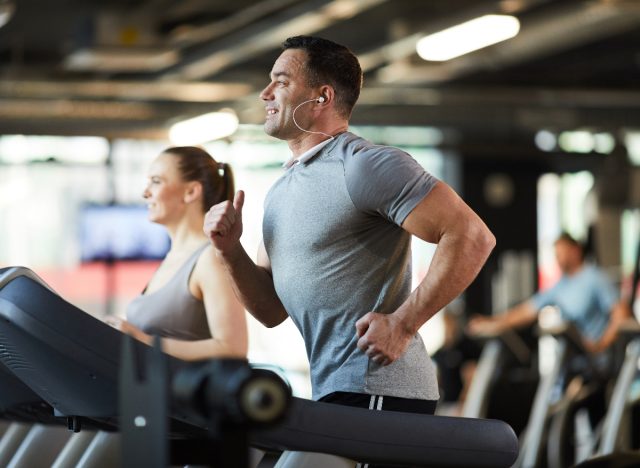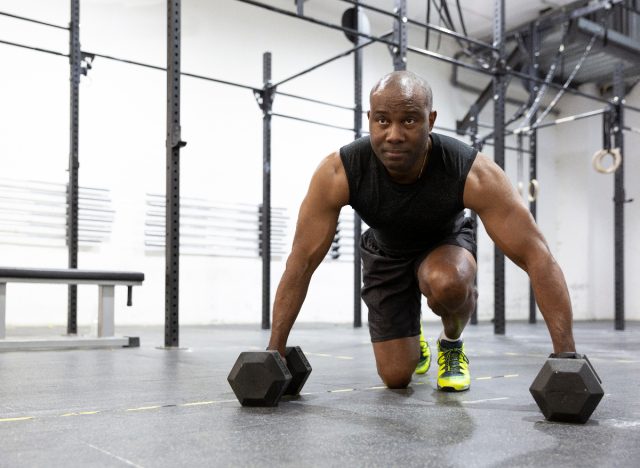For many, the weight loss journey can feel like an uphill battle. You diligently hit the gym and sweat it out on the treadmill, but the scale stubbornly refuses to budge. If this sounds familiar, consider a new approach that combines cardio’s calorie-burning power with the muscle-building magic of strength training. Enter the dynamic duo of interval walking and strength training, a potent fitness fusion designed to supercharge your weight loss efforts and leave those unwanted pounds in the dust.
In this guide, I’ll take you through the science behind why this winning combination works. We’ll explore the specific benefits of interval walking and strength training, from boosting your metabolism to strengthening your bones. But this isn’t just theory; I’ll also provide practical strategies for incorporating these exercises into your routine. Next, I’ll show you how to structure effective workouts, whether you prefer to combine them in a single session or schedule them on separate days. Finally, things will wrap up with a sample workout routine complete with exercises and timings to get you started on your weight loss journey with a powerful one-two punch.
The Benefits of Interval Walking
Boost Cardiovascular Health

The fluctuating pace in interval walking challenges your cardiovascular system, improving heart health and endurance. It’s like giving your heart a workout that strengthens it over time, making everyday activities easier and more enjoyable. Enhanced cardiovascular health reduces the risk of heart disease, lowers blood pressure, and improves cholesterol levels.
Keeps Workouts Interesting


Boredom is a typical workout killer. Interval walking adds variety and excitement to your routine. Whether you walk outdoors and change your speed based on landmarks or use a treadmill and adjust the incline, the constant changes keep your mind and body engaged. This variety helps maintain motivation and adherence to your fitness routine, which are crucial factors in long-term weight loss success.
The Benefits of Strength Training
Build Lean Muscle Mass and Burn More Calories


Strength training is all about resistance exercises that build and maintain muscle mass. More muscle means a higher resting metabolic rate, which translates to more calories burned even when you’re not working out. This is crucial for weight loss and maintaining a healthy weight. Additionally, increased muscle mass improves body composition, giving you a more toned and defined appearance.
Improve Bone Density and Joint Health


Lifting weights strengthens your bones and joints, reducing the risk of osteoporosis and injury. Strong bones and joints mean a more robust body that can handle various physical activities, from everyday tasks to intense workouts. Strength training also helps alleviate arthritis symptoms and reduces the likelihood of fractures as you age.
Enhance Functional Fitness


Strength training improves overall functional fitness, making everyday activities easier and safer. It increases strength, balance, and coordination, which are essential for daily life and overall well-being. Enhanced functional fitness translates to better performance in daily activities, such as carrying groceries, climbing stairs, or playing with your kids, thus improving your quality of life.
How To Use Interval Walking and Strength Training for Weight Loss
Combine Cardio and Strength in One Session


Combine strength training and interval walking in a single workout session for maximum efficiency. Start with a warm-up to prepare your muscles and prevent injury. Begin with strength training exercises to build muscle and increase your metabolism. After your strength training session, transition to interval walking for a high-intensity cardio workout.
Performing strength training first has several benefits. It allows you to use your full strength and energy when lifting weights, ensuring you perform exercises with proper form and maximum intensity. This approach also depletes your glycogen stores, so when you switch to cardio, your body taps into fat stores for energy, enhancing fat burn.
For example, you can start with 20-30 minutes of strength training exercises, such as squats, deadlifts, and push-ups. Follow this with 20-30 minutes of interval walking, alternating between one minute of brisk and moderate-paced walking. This combination keeps your heart rate elevated while also engaging your muscles.
Schedule Separate Sessions for Variety


Alternatively, you can schedule separate interval walking and strength training sessions on different days. This method allows you to focus intensely on each type of workout, ensuring you get the full benefits of both. For instance, dedicate Mondays, Wednesdays, and Fridays to interval walking and Tuesdays and Thursdays to strength training. This approach provides a variety of workouts and prevents monotony, keeping you engaged and interested in your fitness journey.
Consistency is Key


Consistency is crucial to seeing significant results. Aim for at least three to four weekly workouts, mixing interval walking and strength training sessions. This regularity helps build a sustainable fitness routine that promotes long-term weight loss and health benefits. Track your progress and gradually increase the intensity and duration of your workouts to continue challenging your body and avoiding plateaus.
Sample Workout Routine


Warm-Up (5 minutes)
- Start with light cardio for three to five minutes to get your blood flowing, and your muscles warmed up.
- Dynamic Mobility
- Leg Swings x 10 each
- Standing Rotations x 10 each
- Alternating Lateral Lunges x 5 each
- Knee Hugs x 10 each
- Quad Pulls x 10 each
- Air Squats x 10
Strength Training Circuit (20 minutes)
- Squats (3 sets of 8-12 reps)
- Stand with feet shoulder-width apart and lower into a squat, keeping your chest up and knees behind your toes.
- Push-Ups (3 sets of 10-15 reps)
- Start in a plank position and lower your body until your chest nearly touches the floor, then push back up.
- Bent-Over Rows (3 sets of 8-12 reps)
- Use dumbbells or a barbell. Bend at your hips and knees, and pull the weights towards your torso, squeezing your shoulder blades together.
- Lunges (3 sets of 8-12 reps per leg)
- Step forward with one leg and lower your body until both knees are bent at a 90-degree angle, then push back to the starting position.
- Planks (3 sets of 30-60 seconds)
- Hold a plank position with your body straight from head to heels, engaging your core.
Interval Walking (20 minutes)
- Minute 1-2: Warm-up walk at a moderate pace.
- Minutes 3-4: Fast walk (high-intensity).
- Minutes 5-6: Slow walk (recovery).
- Repeat the fast and slow walk intervals four more times.
Cool Down (5 minutes)
- Finish with a light walk to bring your heart rate down.
- Stretch all major muscle groups, focusing on the legs and upper body to improve flexibility and reduce muscle soreness.
Jarrod Nobbe, MA, CSCS


